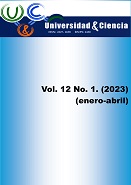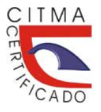Computer system for the automatic classification of pollen grain images
Keywords:
Automatic classification, Microscopic images, Palynology, PollenAbstract
The present investigation offers a system that facilitates the process of classifying images of pollen grains of the Cuban Beekeeping Company, whose results showed that there is slowness in the process of pollen analysis of honey, since the species that belong to the same family share characteristics of identification. For this reason, it became necessary to develop a computer system that would allow melissopalynologists to automatically classify a pollen grain image. The implementation of the system was carried out using Keras for the creation of convolutional neural networks and Tensor Flow for working with images, both Python libraries, which makes it possible to use them on any platform. To guide the development process, the Rational Unified Process (RUP) methodology was used. The proposed system enables the rapid identification and classification of images of pollen grains. It stores a data set that allows the system to identify plant species.
Downloads
References
ACERO-CUELLAR, T. … [ et al.] (2022). There’s no difference: Convolutional Neural Networks for transient detection without template subtraction. Disponible en: https://arxiv.org/pdf/2203.07390v1.pdf. Visitado: 25 de marzo de 2022.
ADAMS, A. (2021). Python Programming, Deep Learning: 3 Books in 1: A Complete Guide for Beginners, Python Coding for Ai, Neural Networks, & Machine Learning, Data Science/Analysis with Practical Exercises for Learners. S. L.: Anthony Adams.
BELBAHRI, M. … et al.] (2019). Foothill: A Quasiconvex Regularization for Edge Computing of Deep Neural Networks (arXiv:1901.06414). arXiv. Disponible en: https://doi.org/10.48550/arXiv.1901.06414. Visitado: 21 de septiembre de 2022.
BI, Y., XUE, B., y ZHANG, M. (2021). Genetic Programming for Image Classification: An Automated Approach to Feature Learning. S.L.: Springer Nature. ISBN 978-3-030-65927-1.
BROWNLEE, J. (2019). Deep Learning for Computer Vision: Image Classification, Object Detection, and Face Recognition in Python. Machine Learning Mastery. Disponible en: https://machinelearningmastery.com/deep-learning-for-computer-vision/. Visitado: 3 de mayo de 2022.
ELGENDY, M. (2020). Deep Learning for Vision Systems. Shelter Island, NY: s.n. ISBN 978-1-61729-619-2.
GARCÍA SÁNCHEZ, E., ALCALÁ NALVAIZ, J. T. y ORELLANA LOZANO, L. (2019). Introducción a las redes neuronales de convolución. Aplicación a la visión por ordenador—Repositorio Institucional de Documentos. Universidad de Zaragoza. Disponible en: https://zaguan.unizar.es/record/87398?ln=es# Visitado: 6 julio 2021.
IBRAHIM, Y., NAGY, B. y BENEDEK, C. (2019). CNN-Based Watershed Marker Extraction for Brick Segmentation in Masonry Walls. En F. Karray, A. Campilho, y A. Yu (Eds.), Image Analysis and Recognition (pp. 332-344). Springer International Publishing. Disponible en: https://doi.org/10.1007/978-3-030-27202-9_30 Visitado: octubre de 2022.
LOUVEAUX, J., MAURIZIO, A. y VORWOHL, G., (1978). Methods of Melissopalynology. Bee World, Vol. 59, No. 4, pp. 139-157. Disponible en: https://doi.org/10.1080/0005772X.1978.11097714. Visitado: 24 de junio de 2022.
MARDANIRAD, S., WOOD, D. y ZAKERI, H., (2021). The application of deep learning algorithms to classify subsurface drilling lost circulation severity in large oil field datasets. SN Applied Sciences, Vol. 3. Disponible en: https://doi.org/10.1007/s42452-021-04769-0. Visitado: 24 de junio de 2022.
MOORE, P.D. y WEBB, J.A., (1978). An Illustrated Guide to Pollen Analysis. London: s.n. ISBN 978-0-340-21449-7.
RAFF, E. (2022). Inside Deep Learning: Math, Algorithms, Models. S.l.: Simon and Schuster.
SANTOS, I.E.M. …[et al.], (2000). Flora apícola de la provincia de Camagüey. Revista del Jardín Botánico Nacional, Vol. 21, No. 2, pp. 235-252.
SEVILLANO, V. y AZNARTE, J.L., (2018). Improving classification of pollen grain images of the POLEN23E dataset through three different applications of deep learning convolutional neural networks. PLOS ONE, Vol. 13, No. 9, pp. e0201807. Disponible en: https://doi.org/10.1371/journal.pone.0201807. Visitado: 10 de octubre de 2022.
TAN, M. y LE, Q.V., (2020). EfficientNet: Rethinking Model Scaling for Convolutional Neural Networks. En: arXiv:1905.11946 [cs, stat]type: article [en línea]. S.l.: arXiv. arXiv:1905.11946. Disponible en: http://arxiv.org/abs/1905.11946. Visitado: 9 junio 2022.
VALES, M.A., ÁLVAREZ, A., MONTES, L. y ÁVILA, A., (1998). Estudio Nacional sobre la Diversidad Biológica en la República de Cuba [en línea]. Disponible en: https://docplayer.es/storage/68/59769548/59769548.pdf. Visitado: 10 de septiembre de 2022.
WADI, H. (2021). Step By Step Neural Networks for Image Classification using Python GUI: A practical approach to understand the neural networks algorithm for image classification with project based example. S.l.: Turida Publisher.
WONG, A. (2018). NetScore: Towards Universal Metrics for Large-scale Performance Analysis of Deep Neural Networks for Practical On-Device Edge Usage (arXiv:1806.05512). arXiv. Disponible en: https://doi.org/10.48550/arXiv.1806.05512 Visitado: 9 junio 2022.
Downloads
Published
Versions
- 2023-05-24 (2)
- 2023-01-25 (1)
How to Cite
Issue
Section
License
Copyright (c) 2023 Universidad & ciencia

This work is licensed under a Creative Commons Attribution-NonCommercial-ShareAlike 4.0 International License.





















